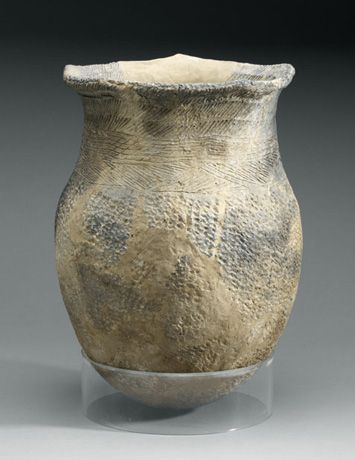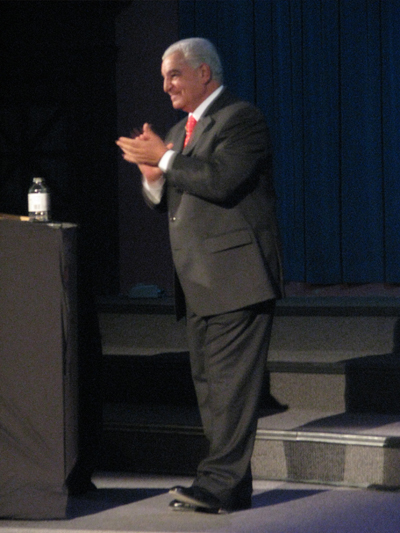In celebration of our chilly northern climate, the Ontario Archaeological Society will be holding their annual symposium in Killarney Ontario from Sept 24-26, a town on the northern tip of Lake Superior. The symposium is called “Shibaonaning – the place of the clear passage.” It willfocus on the archaeology of the Canadian Shield. Its a vast, rocky, forested area of Canada that covers Northern Ontario, Quebec, Manitoba and parts of the arctic. At eight million square kilometres, its nearly double the size of the entire European Union. Although it’s chalk full of mines, the rocky terrain makes it difficult to…
-
-
After reading this title youre probably asking yourself why on earth would one consider a marketplace to be the most important ancient spot in London? London certainly has finds that lend more to the imagination. The Temple of Mithras was dedicated to the Persian god of light and the sun, Gladiators duelled in out in the Roman Amphitheatre, and if were willing to look outside of London Colchester had a Roman circus that has just been saved. So why did I choose a marketplace as my answer the question posed by Bloggers Challenge 2? Simply put, the forum, in the…
-
Question who can completely fill up a cavernous 1,500 seat domed hall on a Saturday night in Toronto? Answer Dr. Zahi Hawass I dont get to introduce rock stars, said Art Gallery of Ontario CEO Matthew Teitelbaum. Well tonight he did. Forget the critical New Yorker article, the mixed reviews of the new Tut exhibition at the Art Gallery of Ontario, or the fact that local Toronto media largely stayed away from this lecture. The worlds most well-known Egyptologist completely filled Convocation Hall, with people who had all paid a small admission fee (no more than $18) to hear him…
-
Planners and construction workers are hard at work building new Byzantine and Roman galleries at the Royal Ontario Museum, in Toronto Canada. The galleries will be completed some time in 2011. For now I thought I would show a picture of a key artefact that will be featured in the Byzantine Gallery. Its a mosaic that dates to the time when the city of Constantinople was being founded (AD 325-350). Curator Paul Denis said that its 12 feet by 20 feet and will be a key part of the Byzantine gallery. He added: its got geometric patterns around the border…
-
Last summer headlines were made when a team of archaeologists unearthed a cache of tablets from an Assyrian temple at Tayinat. They were discovered by a team led by Professor Tim Harrison of the University of Toronto. Conservation and translation work is ongoing and it is hoped that some translations will be ready in the months ahead. Last Friday, at an archaeology research day presentation in Toronto, Professor Harrison shared some news on what the translations are revealing. He said in his remarks that the cache of tablets is essentially a collection of literary texts and is part of a…
-
Snow-weary Toronto residents are set to get some Aegean relief this Saturday. The Royal Ontario Museum, in Toronto Canada, will be hosting Ontario Aegean Archaeology Day. Nine speakers from universities in Ontario and New York State will present their research on the ancient Aegean. The event is free if you have a museum membership – non-members will have to pay the usual museum admission fee. The event will be held in the Eaton theatre, and is sponsored by the museum, the Hellenic Republic of Greece, Greek Communities of Canada and the Archaeology Centre at the University of Toronto. Don’t Miss…
-
For Dr. Robert Mason, an archaeologist with the Royal Ontario Museum, it all began with a walk last summer. Mason conducts work at the Deir Mar Musa al-Habashi monastery, out in the Syrian Desert. Its still in use today by monks. The finds at the monastery date mainly to the medieval period and include some beautiful frescoes. I went for a walk into the eastern perimeter, he said – an area that hasnt been explored by archaeologists.What he discovered is an ancient landscape of stone circles, stone alignments and what appear to be corbelled roof tombs. From stone tools found…
-
This Sunday tutters at the Art Gallery of Ontario (AGO), in Toronto Canada, will attempt to set a world record for the most people tutting at one time. The art gallery is hosting the exhibit King Tut: The Golden King and the Great Pharaohs. Heritage Key has a preview ofit here. The dance is a form of hip hop dance inspired by Ancient Egypt. It was epitomized by comedian Steve Martin in the 1970s on Saturday Night Live. The Gallery has already signed up more than the 250 dancers needed to set the record, said the AGO in a news…
-
This Friday promises a feast for archaeology lovers in the Toronto area. The Archaeology Centre, at the University of Toronto, is holding Archaeology Research Day. It takes place from 10 am to 4 pm at Koffler House, 569 Spadina Ave., Room 108. Fifteen presentations will be given on archaeology research happening all around the world. Its a free event and theres no registration. If youre interested in research involving ancient times, you will not be disappointed. Much of the research that is going to be presented dates to that era. Here are some of the highlights: News From Syria This…
-
The latest Tut research has revealed a king who, while still in his teens, probably had to walk around with a cane (as seen in this stele), had a cleft palette, suffered from malaria and had a spine that was out of whack. As an Egyptologist told me today, this pretty much kills the idea of King Tut as a sort of warrior king who died in a chariot accident. But for those wanting to see a warrior in the family, you may be interested in another research finding. The new Tut research has confirmed who one set of King…




